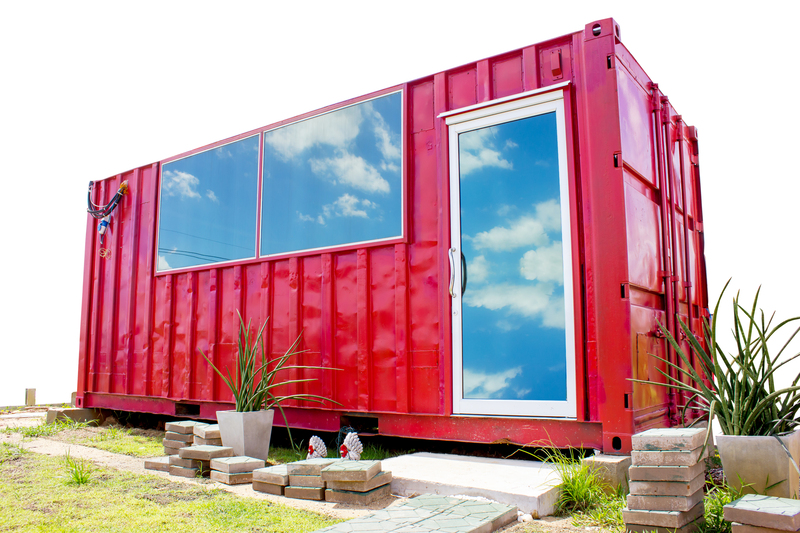A Looming Challenge: Confronting the Problem of Space Garbage
Posted on 26/03/2025
Space has always been seen as the final frontier, a vast and infinite expanse that holds the key to our curiosity and advancement. However, with technological advancements and increased space exploration activities, we have unknowingly created a new problem - space garbage. The accumulation of man-made debris in Earth's orbit poses a serious threat not only to current and future space missions, but also to our planet and all life on it. In this article, we will delve into the issue of space garbage and explore what needs to be done to address this looming challenge.
Understanding Space Garbage
Space garbage, also known as space debris or orbital debris, refers to man-made objects that are no longer useful or functional in space. These objects can include old satellites, spent rocket stages, pieces of rockets or spacecrafts, and even fragments from collisions between these objects. According to NASA's Orbital Debris Program Office, there are currently more than 23,000 pieces of space debris larger than 10 centimeters circling the Earth at speeds of up to 28,000 kilometers per hour. This may not seem like a lot compared to the vastness of space, but even a small piece of debris can cause significant damage when traveling at such high velocities.

The Dangers of Space Garbage
The main concern with space garbage is the potential for collisions with active satellites or spacecrafts. These collisions can cause irreparable damage or even complete destruction of these valuable assets. For example, in 2009 an active U.S. satellite was accidentally hit by a defunct Russian satellite, resulting in thousands of pieces of debris being dispersed into orbit. This event highlighted the serious consequences of not properly managing and removing space junk from Earth's orbit.
Additionally, the growing amount of debris makes it increasingly difficult for future space missions to safely navigate through space. The potential for collisions becomes higher, posing a threat to both crewed and unmanned missions. Moreover, the debris can also enter Earth's atmosphere and pose a risk to human life and property on the ground.
The Causes of Space Garbage
The main cause of space garbage is our reliance on satellites for various everyday activities such as communication, navigation, and weather forecasting. As these satellites age or become obsolete, they are left in orbit instead of being brought back to Earth or properly disposed of in a controlled manner. Another major contributor to the problem is the intentional destruction of satellites in military tests, which creates even more pieces of debris. Further exacerbating the issue is the lack of regulations and enforcement in place for space debris management.
Solutions for Space Garbage
One of the key solutions to address the problem of space garbage is to clean up existing debris using innovative technologies. For instance, Japan's space agency JAXA has developed a system that uses magnets to collect and remove small pieces of debris from orbit. Other proposed solutions include using lasers or nets to capture debris, or sending spacecrafts equipped with harpoons or robotic arms to manually remove larger objects.
Prevention is also crucial in managing the accumulation of space garbage. This can be achieved by implementing stricter regulations for satellite operators, such as requiring them to deorbit their satellites after their operational lifespan ends. Encouraging collaboration between countries and developing international guidelines for responsible space activities can also help prevent further contributions to the problem.
Pros and Cons
On one hand, addressing the issue of space garbage is essential for ensuring safe and sustainable space activities. With proper management and removal of debris, we can prevent costly damage to valuable assets and improve safety for future missions. Additionally, cleaning up existing debris can also open up opportunities for new space projects that were previously deemed too risky.
On the other hand, the efforts to address space garbage come with a hefty price tag. Developing and implementing new technologies for debris removal can be expensive, and there are also challenges in funding and coordinating international efforts. Moreover, with the ever-growing number of satellites being launched into orbit, it is a continuous battle to keep up with managing and cleaning up space garbage.

Tips and Takeaways
If you're interested in reducing your own impact on space debris, here are some tips and takeaways to keep in mind:
- Support initiatives and organizations dedicated to mitigating space debris, such as the Space Debris Office of the United Nations.
- Educate yourself and others about responsible space practices, including proper disposal methods for satellites and debris.
- Stay updated on developments in technology and regulations for managing and removing space garbage.
- Consider the environmental impact before supporting any commercial space activities or projects that could contribute to further accumulation of debris.
In Conclusion
The problem of space garbage may seem daunting, but it is not an impossible challenge to overcome. With a collaborative effort from governments, space agencies, and private companies, we can develop effective solutions for managing and removing existing debris while preventing further contributions to the problem. By taking action now, we can ensure a safe and sustainable future for both our planet and our exploration of the vastness of space.










